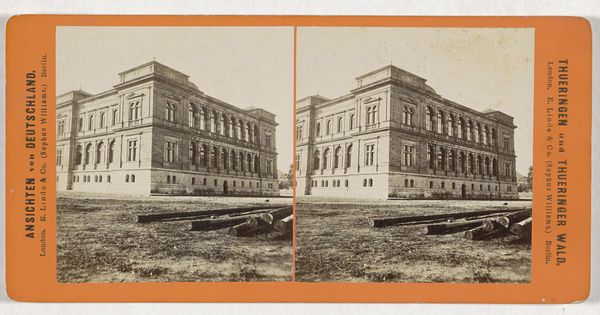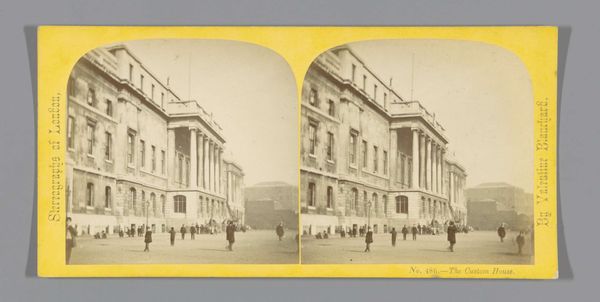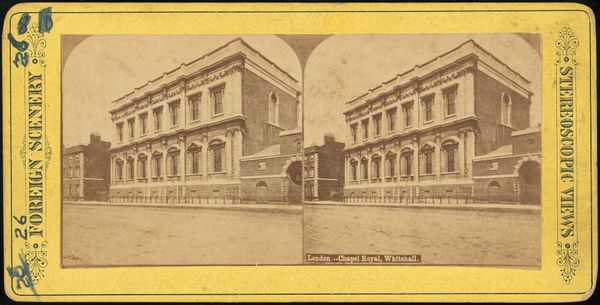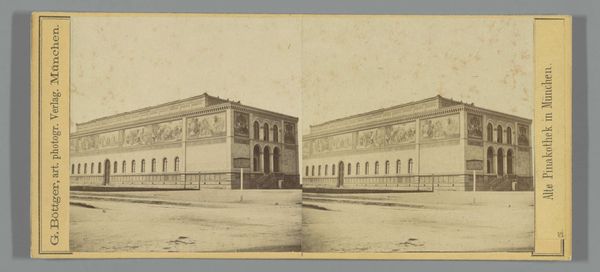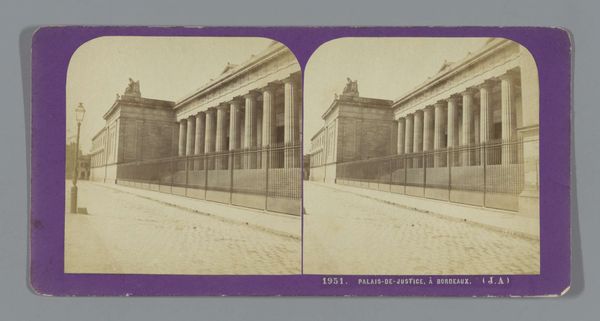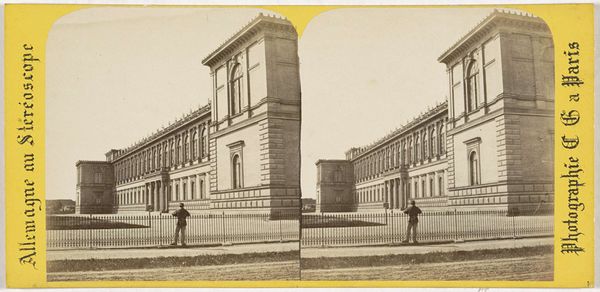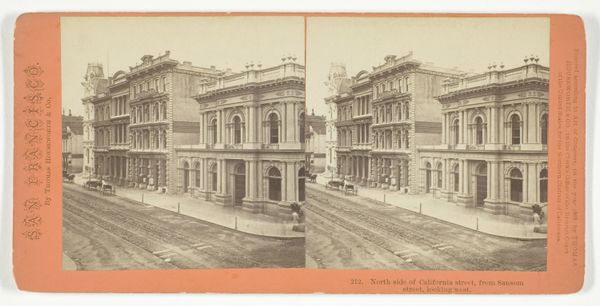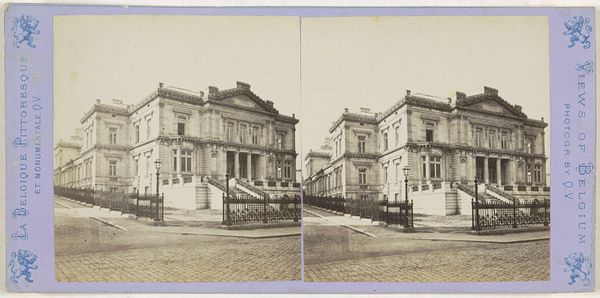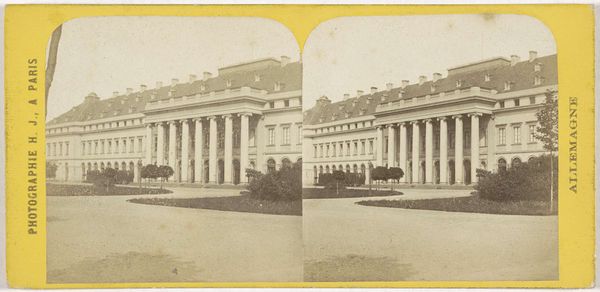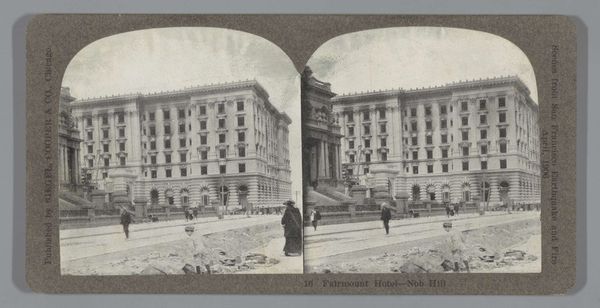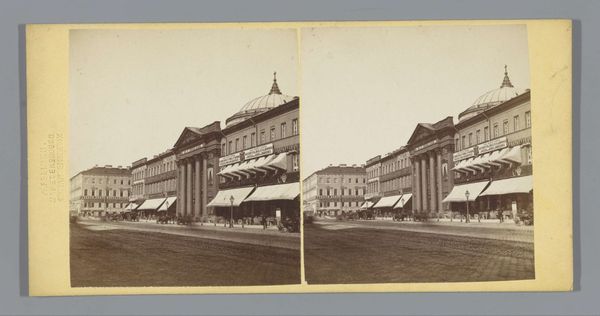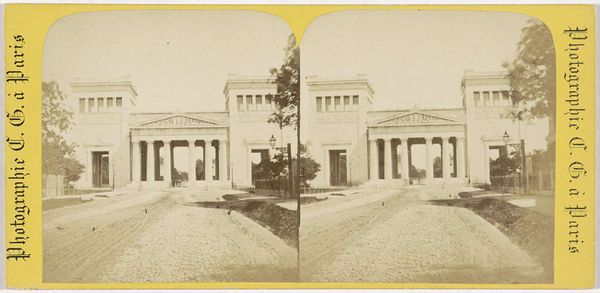
photography, gelatin-silver-print
#
water colours
#
photography
#
coloured pencil
#
gelatin-silver-print
#
neo-romanticism
#
cityscape
Dimensions: height 86 mm, width 176 mm
Copyright: Rijks Museum: Open Domain
Editor: This is a photograph titled "Königliche Hauptbank, Berlin," taken between 1868 and 1870 by Johann Friedrich Stiehm. Looking at it, I’m struck by how...stark it feels. The building is so imposing, and the street seems almost deserted. What do you make of this image? Curator: Stark is a perfect word. I find myself thinking about ambition, and maybe even a little fear, when I look at this bank. Notice how Stiehm uses the gelatin-silver print to emphasize the bank's robust architecture. He almost flattens the perspective, creating a sense of solidity. It's as if he's trying to convey the bank's power through pure physical presence. What do you suppose folks were meant to feel when looking at this back then? Editor: Intimidation, perhaps? Banks weren't always so... commonplace. This image makes it seem like a monument to commerce. I'm interested in the neo-romanticism tag. It seems contradictory given the subject. Curator: Yes, that tension is delicious, isn't it? We often see neo-romanticism in landscapes, a yearning for the sublime in nature. But Stiehm uses it here to ennoble this very symbol of urban life, finding that "sublime" in something man-made. Does that change how you see the cart in the foreground, almost like a small, fleeting detail compared to this solid construct behind it? Editor: It does. It almost makes the cart look insignificant. The photograph now seems less about a simple cityscape and more about a declaration of economic power. Curator: Precisely! I see that now, too. Funny how a fresh pair of eyes, yours in this case, helps one see things anew. Editor: Agreed! It's been so helpful to think about how this photograph participates in a larger cultural conversation and it's Neo-Romantic implications.
Comments
No comments
Be the first to comment and join the conversation on the ultimate creative platform.
